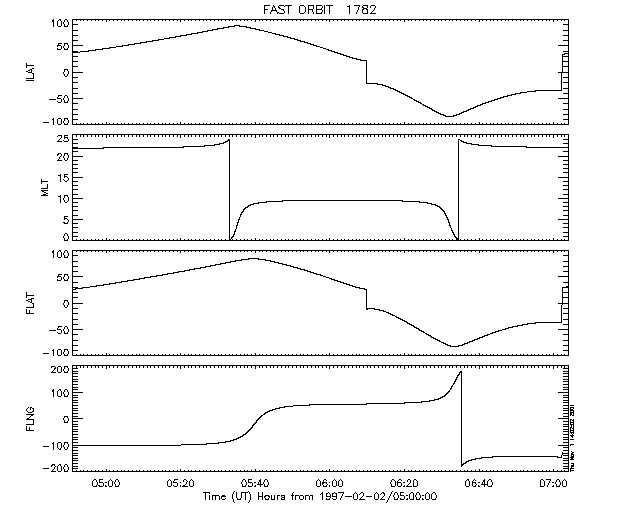
Figure 1

This image depicts 24 hours of positional data for the FAST satellite as computed using the IDL procedure GET_FA_ORBIT. The data cover the period between 1997-02-02/00:00:00 UT and 1997-02-03/00:00:00 UT. There are obvious steps in ILAT and FLAT that occur twice per orbit, well away from perigee. Less obvious steps occur at the same times in FLNG as well.
The steps occur when ILAT and FLAT are approaching a sign change.
Figure 2

This image shows one orbit's worth of positional data from the interval depicted in Figure 1 (orbit 1782).
The jumps in ILAT occur because FAST is at a finite distance from the position of the offset, tilted dipole when it crosses the magnetic equator. ILAT is defined by the relation: cos2(ILAT) = cos2(MLAT)/(r/Re), where MLAT is the latitude of FAST's position relative to the offset, tilted dipole axis, r is the distance from FAST to the position of the dipole, and Re is the Earth's radius (6371.2 km in this model).